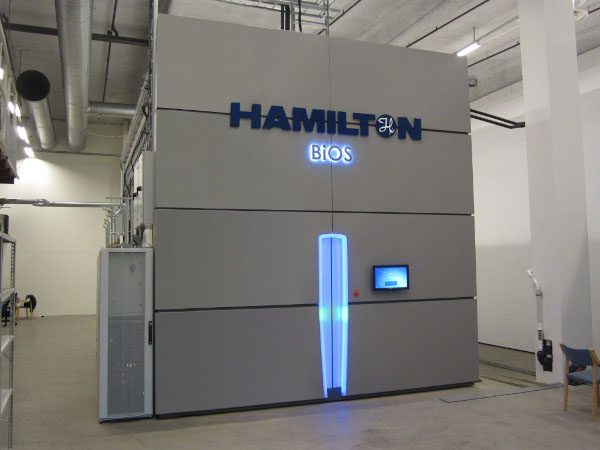BIOMEDICAL RESEARCH INSTITUTE
Biorepository Unit
Storage

BiOS -80°C
Storage in the BiOS system offers a number of features, which makes it far superior to conventional ultra-low temperature (ULT) freezers. These include the following:
-
Automated sample management workflows
Storage and retrieval from conventional ULT freezers is a time-consuming, error-prone manual process. With BiOS, samples storage and retrieval are fully automated processes. BiOS tracks each individual sample throughout the system by means of a 2D barcode on the bottom of the specialized biobanking tube and retrieves requested samples quickly and efficiently. BiOS clients simply submit a list of barcodes they wish to retrieve and collect when they receive notification that their order has been completed.
-
Sample integrity and temperature control at -80°C
The workflow of the system ensures that samples in storage will remain at a constant temperature of -80°C, despite the frequent introduction and removal of samples. When storing in conventional ULT freezers, sample integrity is at risk of being affected by constant fluctuations due to the constant opening and closing of the freezer, room temperature sample storage directly adjacent to frozen samples, etc. BiOS mitigates these risks, by limiting these thermal cycles and preventing sample degradation. In addition, the temperature of each sample is tracked at all times and a temperature profile is created for each sample as it moves throughout the system.
-
Traceability
BiOS records a full audit trail and temperature log for all samples managed in the system, from the time a sample enters, to the time it leaves.
-
Sample security
The system is incredibly secure, allowing users to request and retrieve samples only with the correct access rights and permissions.
-
Backups
BiOS was designed with built-in redundancies to eliminate a single point of failure. The refrigeration compartments are located outside of the system and therefore any servicing and maintenance work will not affect the samples inside the system. BiOS has built-in protection against adverse events, such as frost or power loss. In the event of a power failure, the facility has a generator to power the system. As an additional backup, the system is able to utilize vapour phase liquid nitrogen for cooling if needed.
An investment in BiOS storage will ultimately save the researcher:
-
Space, by eliminating the need to accommodate hundreds of conventional ULT freezers;
-
Money, by reducing energy costs and eliminating costs associated with purchasing, maintaining and insuring freezers; and
-
Time, by eliminating hours spent manually searching through conventional freezers for samples, sample storage errors, and the need to be onsite after hours due to freezer failure or malfunction.
Please note that there are certain restrictions on what will be accepted for storage in the BiOS. The following is a list of rejection criteria:
- Tubes that are leaking
- Tubes that are visibly overfilled
- Screw caps that are misaligned and/or not screwed on securely
- Cracked or broken tubes and/or screw caps
- Tubes with adhesive labels
- Incompatible tube types and volumes
- BSL3 category infectious agents that have been propagated by culture
- BSL4 category infectious agents
- Materials that may potentially degrade and produce hazardous by-products (i.e. chemicals, toxins, etc.)
- Radioactive materials
- Specimens that have been collected without the relevant and required ethical approval
Liquid nitrogen vapour phase storage -190˚C
The unit also offers sample storage in the Antech CryoMatrix 43K, LN2 Tank – That has an internal capacity of 890L and can store a maximum of 41,600 2ml/1.5ml vials. Inventory management is achieved using a LIMS and conditions are monitored continuously to ensure sample integrity is not compromised.

